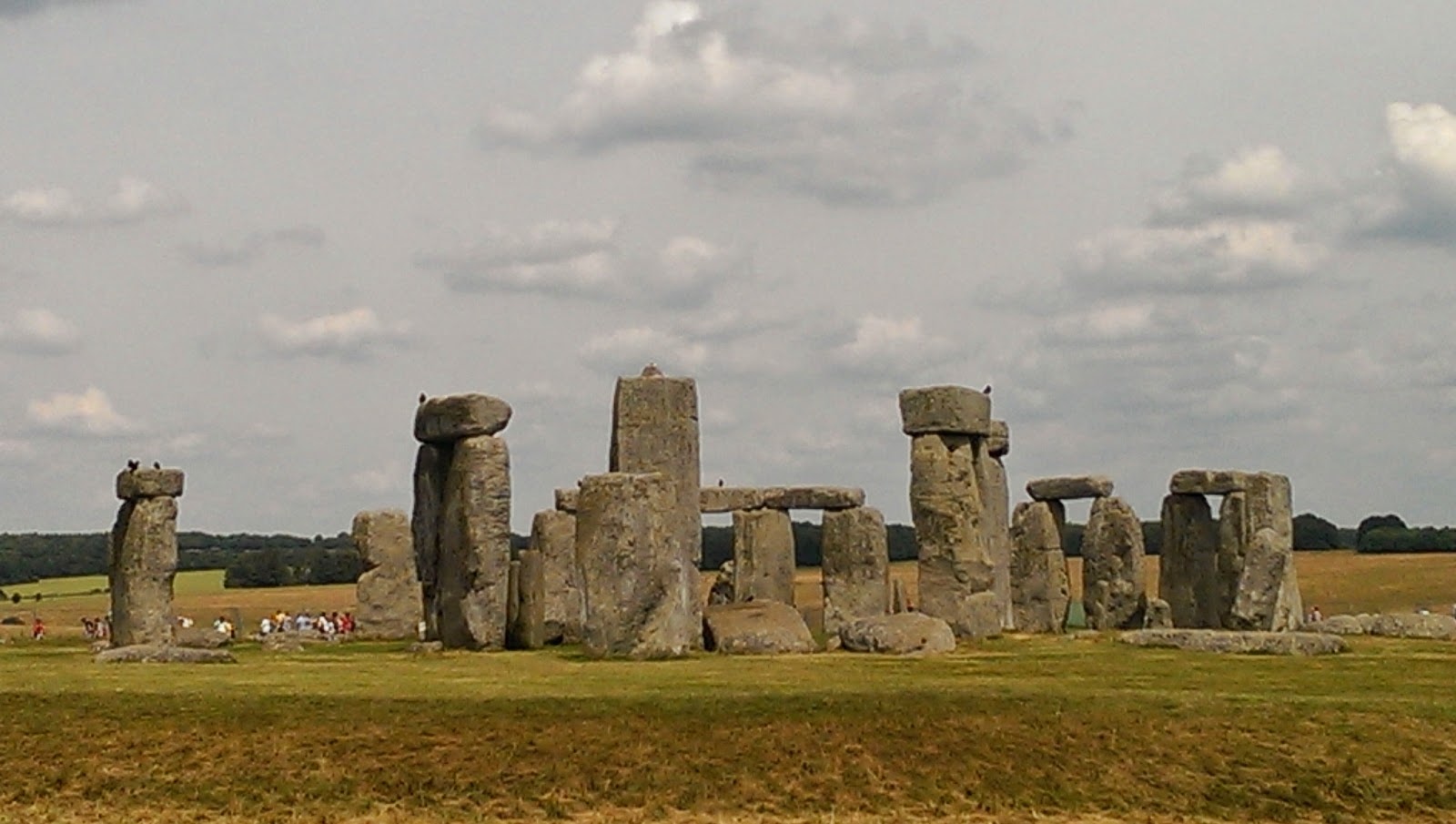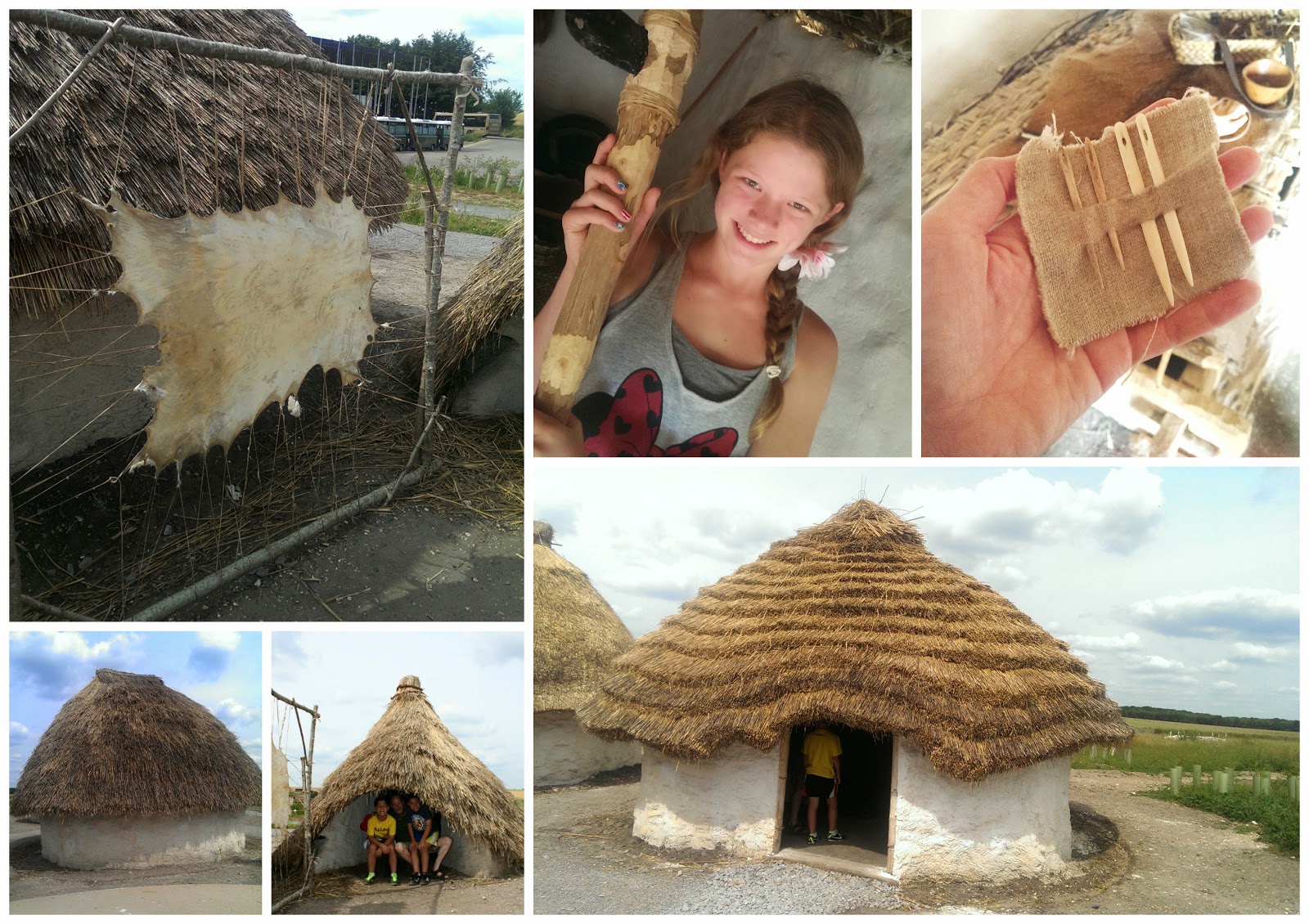Stonehenge: Visiting in 2014
Today is Throwback Thursday, so I decided today would be the perfect day to blog about our trip to Stonehenge. There aren't many things that could be more of a throwback than Stonehenge! A few months ago, I blogged about Stonehenge and its previous visitor facilities, and wondered what the new Visitor Center would be like. Fourty-four years ago, Alfie could stand right next to the stones. Four years ago, we could only stand 100 feet from the stones. What would our visit be like now? Would we be even farther away? Happily, the new logistics don't diminish the experience at all; in fact, I was able to take exactly the same photo, standing at exactly the same spot, as I did four years ago! With all the new exhibits, the whole experience is actually much better than it was, because you come out of it with a much better understanding of the history and culture behind this ancient site.
The new Visitor Center is quite a distance away from the actual stone circles of Stonehenge. I think they did the right thing. The parking lot has plenty of space for cars and coaches, and the Visitor Center has all the modern conveniences like a cafe, souvenir shop, restrooms, and ATM -- yet everything is far away, so when you visit Stonehenge itself, it doesn't feel like a tourist site, it feels ancient and unspoiled and part of the land. To space out the crowds, tickets are timestamped and a set number of tickets are sold each hour. If tickets run out for that timeslot, you'll have to wait till the next one, so I recommend buying your tickets online! I would also budget at least 3 hours to see the whole place.
Inside, visitors will see what Stonehenge looked like throughout the ages (construction began about 5,000 years ago, and it took over 800 years of construction and alteration to reach its current form!), learn about the people who built it and how they built it, and explore theories about why it was built (no, Stonehenge was not built by Druids for blood sacrifices!). The whole thing is very well done; it's not just a place to look at artifacts (although there are plenty of those); there are videos, hands-on exhibits, models, and more.
Outside, visitors can walk around a recreation of the Neolithic village of Durrington Walls, built around 2500 BC (when the stones were first being brought over to Stonehenge), about 2 miles from Stonehenge. The inhabitants of Durrington Wells may very well have been the ones who built and used Stonehenge, and it was fascinating to see how resourceful they were. Their huts had a woven reed frame, plastered over with white chalky cement, with a thatched roof. They made tools from flint and wood, needles from bone, furniture from reeds, clothing from animal skins and leather. Even their shoes looked remarkably like the ones we wear today!
The last time we were at Stonehenge, there were a few of the smaller bluestones on display near the parking lot so visitors could get a close look and feel. Now they have a sarsen stone (sarsens are the largest stones) on display, tethered to a replica of the wooden logs they used to haul the stones from Marlborough Downs to Stonehenge. There's a cool measuring device embedded into the stone that lets you tug at the stone and figures out how many more people you would need to budge the stone.
To see the actual stone circle, you have to take a tram (10-minute ride, the cost is included in your ticket) or walk (20-30 minute walk).
The tram stops in the area that was used to be the visitor parking lot. This was the lot we parked in 2010, the last time we visited. All the concrete is being removed and the area is being reseeded, so that all the land around Stonehenge will be in its natural state. Speaking of your "natural state", there are NO restrooms in this area, not even porta-potties, so if you feel the call of nature, you'll have to take the tram all the way back to the Visitor Center, or find a bush to squat in. I don't know how long that will last, but for now, plan accordingly!
You still can't get near the stones -- I found out that it's not just to protect the stones from wearing down, it's also to protect the ground that the stones are set into (those stone go into the ground at least 6 feet!) from getting worn away and risking the stones loosening and falling down. There are also lots of excavations underneath Stonehenge filled with ancient artifacts!
However, I'm happy to report that the stones are no more inaccessible than they were in 2010. There is still a circular pedestrian path that runs around the stones, so you can walk around and see Stonehenge from every angle. Your ticket comes with a free audio guide, and there are designated areas around the circle where you stop and punch in a number to listen to your audio guide share relevant information. There are also lots of information boards that tell you what you are seeing.
If you really, really, really want the chance to get close to the stones, there are 2 occasions each year when the barriers go down. During the Summer and Winter Solstice, visitors are allowed to approach the stones; people come from all over the country and the world to celebrate, walk around, touch the stones, and see how the rising (in summer) or setting (in winter) sun is perfectly aligned with Stonehenge's center stones. People are allowed to bring jackets and blankets but not tents. I'm sure it's uncomfortable, crowded, and chaotic, but Alfie and I have added "Watch sun rise at Stonehenge during Summer Solstice" to our bucket list!
Subscribe to:
Post Comments (Atom)








1 comment:
It's a shame you don't have a donate button! I'd certainly donate to this
outstanding blog! I guess for now i'll settle for bookmarking and adding your RSS feed to my Google account.
I look forward to fresh updates and will talk about this blog with my Facebook group.
Chat soon!
My page - domain
Post a Comment